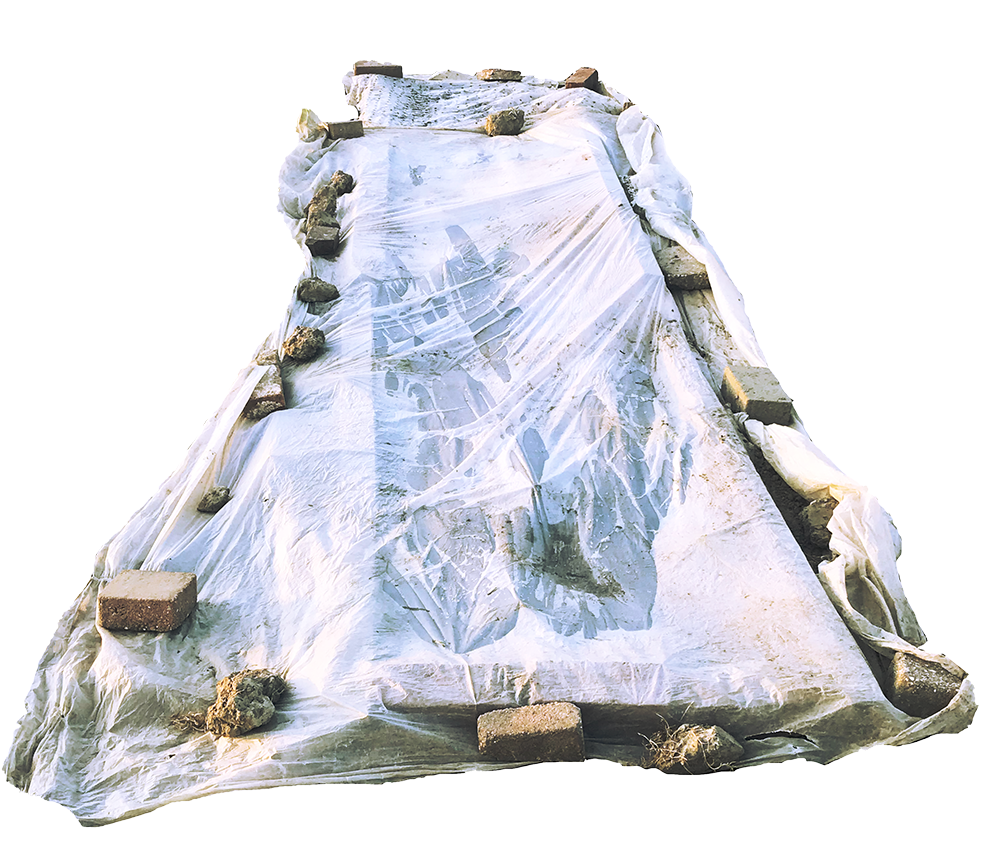BACK TO MAIN

How does one deal as an artist with things one encounters that are so beautiful as they are? Constructions made unconsciously grasping some effortless essence one might try to capture in a painting, never quite succeeding as well. Sculptures seem to arise all around, with the only thing missing being that they’re not framed as sculptures. The effort to create a work seems often to be sabotaged by the (self-)conscious hand, always discriminating in some way between one material and the other.
Necessity or practicality always make the boldest choices.
It is stunning to see how exact a gesture is of a make-shift structure meant to support crops, for instance. Seeing those compositions makes me want to scream ‘Yes!’. Turn around and point to it, telling other people ‘Look! Do you see how true this is?’
In a lecture I once saw by Timothy Morton, an ecologist and philosopher, he summed up art as that which has ‘truth-feel’, the undeniable quality that doesn’t make something look beautiful, but feel true. This feeling can be evoked in the most random and unsuspecting places. Such as a garden. Or a trash dump.
Is it enough for an artist to simply call attention to these things? Or should one try to create their own ‘truth-feel’? The world seems so filled with objects and impressions that often it feels enough just to be in awe of it. How do you deal with image making when it involves adding to an already saturated world? Could an artist be a person who detracts instead of adds? Maybe the role is one of cleaning, prioritising, making clear.
"(...)just as we have lost faith in human intercourse, some random collocation of barns and trees or a haystack and a wagon presents us with so perfect a symbol of what is unattainable that we begin to search again" Orlando - Virginia Woolf